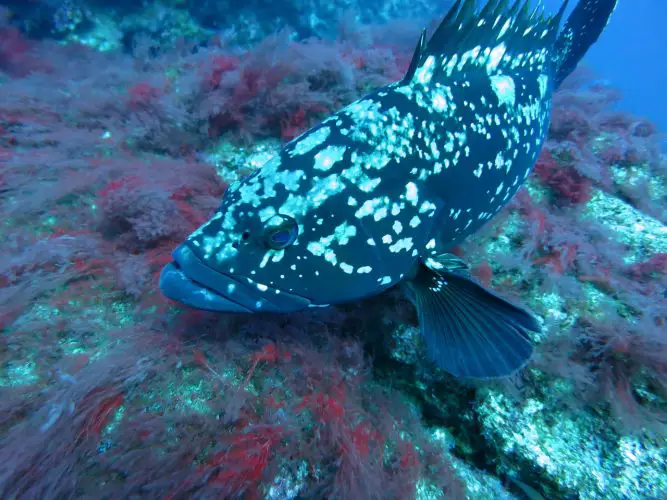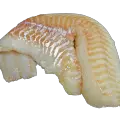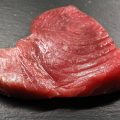
Grouper are large and the best preparing fish fillet. Their large size makes it easy to cut
them into boneless strips. Many people are used to getting a fish fillet that
is already prepared at the store, and all they must do is go home and cook. However,
it is interesting to learn how to fillet fish on your own. Since the grouper
fish are good candidates for filleting, it is important that you learn how to
do it properly. Filleting is not a difficult task and by the end of this
article you will have learned the proper procedure on how to fillet a grouper
fish.
What you need
Like any other task, you will need tools to fillet a grouper. Fortunately, it is nothing
complicated you may only require hand gloves and a filleting knife. The gloves
are important for protecting your hands from the fish bones. Bones can easily
pierce your skin when you run your hand under the fish while filleting. It is
critical that you consider getting a good pair of gloves. It is not necessary,
but I would recommend you use the glove.
The next important thing you need is the filleting knife. You cannot use any knife for
filleting. A standard knife has a wide blade which is not good for this job.
Filleting requires a knife that is thin and flexible that will give you control
and precision. These thin-bladed knives are preferable to wide-bladed knives
because they can lie between the top layer meat and the skin to give you a
clean cut. You may also notice that fillet and boning knives are used similarly
but the fillet knife is much thinner and longer. Its shape and size allow you
to have an easy time when making fine and thin cuts.
Filleting the Grouper
The obvious thing to do before filleting is to clean the grouper and place it on a flat
surface. Depending on the size of your grouper or your preference, you could
fillet by cutting off the grouper’s head. There is no specific approach to how
you should begin to fillet. However, if you start by removing the head, start by
cutting lightly through the gills on both sides of the head. Make sure your
knife is sharp enough to make it easy.
After removing the head, use the knife to make a nice clean cut all the way through
the grouper’s back line. Repeat the procedure, but this time the knife should
go a little deeper to separate the flesh from the backbone. It should allow you
to lift the flesh on one side to allow you to make another cut. This time run
the knife through the flesh at an angle, about 45 degrees, throughout to the
tail. Follow the rib cage as you cute off the flesh separating it from the
backbone. You should have your first clean piece out.
Turn over the remaining part so that the skeleton is on the flat surface giving you
access to the other side of the flesh. You will repeat the same process but
this time you will need to make clean cuts running from the tail. Run the
filleting knife smoothly through the backbone from the tail to the other end.
Repeat this process but make a deeper cut this time and lift the flesh of the
bones as you cut through the fish this time. Make another deep cut at an angle,
preferably 45 degrees, while lifting the separating flesh from the backbone.
Dig in the knife one more time as you approach the tail and split it from the
bones. Separate the fore-flesh from the rib cage with light cuts and follow it
along until you remove second piece.
You should have two large clean pieces separated from the grouper’s skeleton. Nonetheless,
you may notice some bones remained in the belly line of these pieces. Remove
them by slightly cutting through the belly line until they are separated. Do
the same for the other piece. You should now be familiar with how to fillet a
grouper as we only have one minor step to conclude.
The next step would be to skin these pieces. Skinning is a slightly different process
from filleting. Be sure to avoid using the filleting knife for skinning. I
prefer a knife with a long blade about 11 inches or more. Lay over the first
piece and make a deep cut at the tail then place the knife at an angle and cut
through to separate it from the skin. You could make a deep cut, at the tail,
and hold the skin as it separates from the flesh then pull it back as you push
the knife forward. Repeat this for the other piece and once you are done, check
to confirm there are no bones left in any of the pieces.
Assuming you did not begin by cutting off the head, you could start by inserting the
filleting knife just above the fins at the backbone. Run the knife as far as
you can up the back of the head. Turn the knife and cut through the same line
until you reach the tail. Use the knife to feel the grouper’s bones as you make
deeper cuts separating the flesh from the skeleton. After you do the same for
the bottom side of the fish, cut off the head using the same procedure as
explained earlier.
As you have observed, it is easy to learn how to fillet a grouper fish. You only need the
fish, a sharp filleting knife, rubber gloves, and the correct filleting skills.
You may keep repeating the procedure until you master filleting.
Summary
• You need a grouper fish, filleting knife, gloves and a flat surface to be ready to fillet
• Rinse the grouper in clean water before you begin
• You can start by cutting off the grouper’s head
• Use the filleting knife to separate the flesh from backbones
• The knife should be sharp to allow you to cut through the flesh
• After you have separated both sides from the bones, remove the skin
• Use a different knife for skinning
• After removing the skin, check the pieces and remove any remaining bones
• Your fillet it ready!












Pingback: Best fillet knives | Reel Fishing Guru